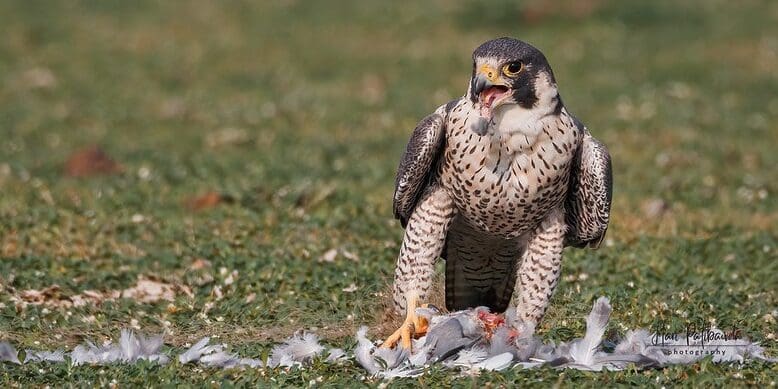Experiments in conservation practice
This blog was written by Nancy Ockendon, Science Manager for the Endangered Landscapes Programme, to accompany the publication of the open-access article Effectively integrating experiments into conservation practice in Ecological Solutions and Evidence. It seeks to raise awareness of opportunities to embed experiments in conservation and restoration management, in order to generate new evidence and ultimately improve practice.

Why do we need more experiments?
It’s widely understood that it is important to consider the available evidence when making decisions about how to conserve or restore species and habitats. However, for many actions, even those that are commonly undertaken, the evidence base is scarce or non-existent. A lack of information describing the effectiveness of different actions may result in less efficient use of thinly stretched resources and poorer outcomes for nature conservation. Therefore, there is a clear need for more evidence to describe the outcomes of a wide range of actions to conserve and restore biodiversity.
The best way to generate new evidence is by carrying out experiments or management trials to test the effectiveness of interventions. By implementing an action and monitoring the effects on the target species or habitats, and comparing the results with sites or individuals where either no action or alternative actions take place, we learn more about what does and doesn’t work for nature conservation.
Experiments as part of practice
Although experiments may traditionally have been considered the domain of academics and researchers, it is often possible to generate new knowledge as part of ongoing conservation practice. My experience and that of my co-authors, as editors of conservation-practice-focused journals and staff in conservation organisations, is that opportunities to include experimental components in practice often do exist, but they are not always identified and capitalised on. Practitioners spend their working lives planning, implementing and recording the effects of conservation management actions. Therefore, they are ideally placed to identify the questions that really need answering, look for opportunities to carry out experiments to address them, and apply their findings in future management. In our paper we present a series of questions to outline the process of identifying a question of interest and planning a suitable experiment to answer it. In this way, experiments can be an important component in adaptive management.
However, challenges to the successful integration of experiments into conservation practice do exist. Designing an informative experiment may not always be straightforward; textbook descriptions of experimental design, for example describing large numbers of uniform replicate plots, often do not match up to the realities of complex natural systems. In the article, we discuss the practicalities of experimental design, illustrated with a wide range of real examples that have produced useful results. In particular, we talk about how many replicates are needed (is it ever acceptable to carry out an experiment where n=1?) and tackle issues of controls and randomisation. Such considerations will help to understand whether it is feasible to carry out an experiment, and to assess when it is worth doing so (or just as importantly when it is not). We also highlight the importance of identifying the right opportunities in advance. These are the cases where new learning can be created without the need for significant additional work and any up-front costs are likely to be repaid by future improvements in efficiencies.
An example in which an experimental trial is being incorporated into reserve management work, was recently implemented by Kent Wildlife Trust when working to control bracken at a site. The conservation team recognised that that the current evidence for the effectiveness of bracken control interventions is limited. Therefore, rather than use a single approach based on inadequate evidence, the reserve team are comparing the effects of three different approaches on bracken coverage: cutting, bruising, and cutting & scarifying. The results will then be used to inform future management.
Another example of a simple replicated controlled trial was carried out by Action for Swifts to investigate whether the addition of a molded ‘form’ into nest boxes for swifts affected how often they were used. The occupancy of swift nest boxes was already being monitored across four different sites, so nest forms were allocated to these existing boxes in an alternate pattern (see photo). Across all four sites, more swifts chose to nest in boxes that contained forms. This allowed the author to recommend that this design feature be added to new boxes.

How can experiments be routinely embedded in practice?
Another significant obstacle to the widespread inclusion of experimental trials in conservation practice is the issue of resources: there is never enough time or money to do all the conservation work we would like and doing experiments is often not seen as a priority for conservation organisations. However, a recent survey found that, on average, conservation funders thought that 1-3% of a project budget was an appropriate amount to devote to experiments, suggesting that including experimental components may be viewed as a positive by funders. Some funders have even begun to require an element of experimental testing and knowledge generation in projects that they fund, with the aim of improving effectiveness of both the projects themselves and the wider conservation community.
One such funder is The Endangered Landscapes Programme, which asks each of the landscape-scale restoration projects that it funds to include a test of an intervention. These tests are designed during the project planning phase and then implemented and monitored as part of each project’s restoration workplan. Results are shared with the wider conservation community to ensure they can be added to the existing evidence base. Two examples of questions being addressed by projects in the programme are given in the Box below. These examples demonstrate that creating new knowledge doesn’t need to be expensive or complicated, but instead can be effectively integrated into ongoing restoration work.
Testing interventions in the Endangered Landscapes Programme
An ELP-funded project led by FFI and AKD is carrying out marine and coastal restoration in the Turkish Mediterranean. One restoration action being undertaken is to transplant Cystoseira (brown algae) at new sites to create habitat for a range of other species, but the intervention has faced challenges, with new transplants being grazed by herbivorous invasive fish and failing to establish. The project team have therefore set up a replicated, controlled trial to see how long the transplants need to be caged for to ensure the plants successfully survive and establish (see photo). The results of this trial will ensure that they make efficient use of the resources needed to provide this follow up care to the transplants.
Another example comes from Cairngorms Connect, a landscape partnership in the Highlands of Scotland, where native woodland is being restored. One area of focus are the specialised invertebrate communities that are associated with deadwood, a habitat that has been lost from many managed plantations and forests. The project’s scientists are comparing the effects of three different approaches to killing trees (ring-barking, winching, and cutting), using a replicated, controlled experimental design (see photo). The impacts on the abundance and types of invertebrate on found trees subject to each type of treatment will be monitored, to see which results in the most diverse and abundant deadwood beetle community.

Maximising benefits
Once the hard work of designing and implementing an experiment and monitoring its effects is complete, it’s crucial to ensure that results are made accessible to others. Practitioners can apply their findings directly in the management of their sites, but publicly sharing their findings can greatly increase their impact. Results can be published in reports, data repositories, websites and scientific journals. Publishing in scientific journals is becoming increasingly accessible, with journals like Ecological Solutions and Evidence, the Conservation Evidence Journal and Conservation Science and Practice all encouraging practitioners to submit articles focusing on practical conservation and applied results. Other platforms, such as Applied Ecology Resources, are available to share grey literature reports and datasets. In this way, evidence collected across different species, habitat and geographies can accumulate, to give an accurate picture of the outcomes of actions.
A cultural shift
We hope that the value of the learning that can be created from experiments is becoming increasingly recognised by conservation organisations and funders. Our vision is that an assessment of whether it is appropriate to include a trial component becomes a routine part of conservation planning. Where worthwhile opportunities to include experiments are identified, sufficient resources to monitor the outcome and write up the results are made available. Such a cultural shift could lead to a step change in the breadth and depth of evidence available to everyone working in conservation.



